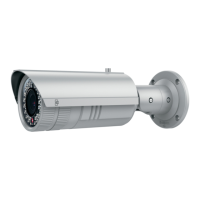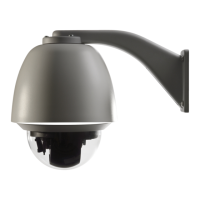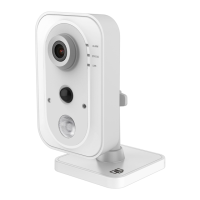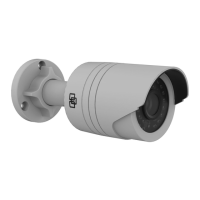TruVision 12/32 Series IP Camera Configuration Manual 13
Menu tabs Description
See page 14 for setup information.
HTTP Port: The HTTP port is used for remote internet browser access.
Enter the port used for the Internet Explorer (IE) browser. Default value is
80.
RTSP Port: RTSP (Real Time Streaming Protocol) is a network control
protocol designed for use in entertainment and communications systems
to control streaming media servers. Enter the RTSP port value. The
default port number is 554.
HTTPS Port:
HTTPS (Hyper Text Transfer Protocol Secure) allows video
to be securely viewed when using a browser. Enter the HTTPS port,
value. The default port number is 443.
Server Port: This is used for remote client software access. Enter the
server port value. The default port number is 8000.
See page 14 for setup information.
3.
DDNS is a service that maps Internet domain names to IP addresses. It is
designed to support dynamic IP addresses, such as those assigned by a
DHCP server.
Specify IP server, DynDNS, and ezDDNS.
DynDNS (Dynamic DNS): Manually create your own host name. You will
first need to create a user account using the hosting web site,
DynDDNS.org.
ezDDNS: Activate the DDNS auto-detection function to set up a dynamic
IP address. The server is set up to assign an available host name to your
recorder.
IPServer: Enter the address of the IP Server.
See page 14 for setup information.
4.
Retrieves a dynamic IP address. See page 15 for setup information.
5.
SNMP is a protocol for managing devices on networks. Enable SNMP to
get camera status and parameter related information. See page 15 for
setup information.
6.
When the feature is enabled, the camera data is secured and user
authentication is needed when connecting the camera to the network.
page 15 for setup information.
7.
QoS (Quality of Service) can help solve the network delay and network
congestion by configuring the priority of data sending.
Enable the option in order to solve network delay and network congestion
by configuring the priority of data sending.
See page 15 for setup information.
8.
Enter the FTP address and folder to which snapshots of the camera can
be uploaded. See page 15 for setup information.
9.
The UPnP (Universal Plug and Play) protocol allows devices to connect
seamlessly and to simplify the implementation of networks in the home
and corporate environments. With the function enabled, you do not need
to configure the port mapping for each port, and the camera is connected
to the Wide Area Network (WAN) via the router.
Enable and set the friendly name detected.
See page 16 for setup information.
10.
Enter the email address to which messages are sent when an alarm
occurs. See page 16 for setup information.

